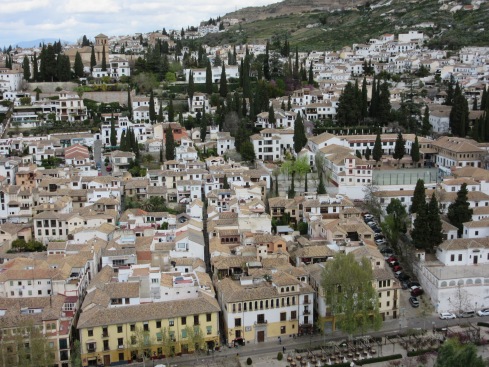When the curtains opened in Venice’s opulent La Fenice Opera House for Bizet’s Carmen, I immediately became suspect that something was wrong. On stage was a telephone booth; I was certain there were no phone booths when Carmen was first performed in 1875. As lovers of live music, we had already searched out the secluded Venice Jazz Club where we enjoyed samba and bossa nova music, attended an intimate chamber orchestra playing Vivaldi’s Four Seasons in old prison connected to the Palazzo Ducale (Doge’s Palace), listened to live jazz at the Hotel Cipriani, and ended every evening listening to live music on the Piazza San Marco.
While looking for other live musical performances, we were excited to learn that Carmen would be performed at the recently rebuilt Teatro La Fenice. We immediately walked to the Opera House in hopes of securing tickets for that night’s performance. We succeeded in getting two tickets in the coveted lower loge seats which are directly across from the stage, high enough to prevent obstructed views from taller patrons.
La Fenice is one of the most famous theatres in Europe. The San Benedetto Theatre, as it was originally known, saw its first performance in the early 1700’s, but was destroyed by fire and later forced to move due to a legal dispute. When the new theatre was opened in 1792, it was aptly named La Fenice, which means The Phoenix. The theatre suffered two more fires, the last an arson by two electricians in 1996. It reopened in November 2004.
On the evening of the performance we were attending, we donned our finest apparel and walked with anticipation to La Fenice. We wandered the beautiful building before taking our seats. We had previously seen Carmen and were excited to see it in Venice. Once the opera started, it quickly became apparent this was not the traditional Carmen we expected. While we were trying to digest the phone booth and more contemporary set and costumes, during the opening march, a man ran around in circles in his underwear carrying a gun. This version of Carmen was represented to be set in a contemporary fascist era. During one particularly bizarre part, the cast pulled a Christmas tree from the trunk of an old Mercedes Benz, and proceeded to assemble and decorate it. While the adults and children were decorating the tree, a female prostitute engaged in salacious simulated sexual activity, with the children present. Carmen ultimately pulled off and held up her bright red panties, which were hoisted up the flagpole. Several times I closed my eyes to disrupt the visual assault on my senses; with closed eyes I could enjoy the spectacular vocals. However, every time I opened my eyes the bizarre set and shenanigans interfered with my ability to enjoy the opera. I suspected my son, an artistic soul who has experience in the performance arts, would be more receptive.
By the intermission, I determined that in spite of the fantastic singing, I couldn’t take it any longer and decided to return to the Hotel Cipriani for more ego-syntonic jazz. To my surprise, my son concurred with my Carmen experience and decided to join me. In retrospect, I wondered if there was any way I could have known this was a non-traditional version of Carmen, but realized there was nothing in the advertisements or communication from the theatre ticket staff that telegraphed this unusual interpretation, so I just chalked it up to another laughable travel memory.











